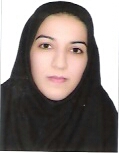Hajar Shafie
Effect of Salinity Stress on Iranian Melons (Cucumis melon) Iandvaces
Salinity is one of the most significant environmental tensions which impacts on crops farming. In regard to the growing saline farmland, the recognition of salinity-resistant type of fruits such as melon and also the exploration of the most adjustable variety of that plant to saline water and soil have gained much more primacy than before. To survey the reactions by various Iranian melon masses in saline conditions and also to identify the salinity-sensitive and/or resistant species, two discrete experiments were executed either in a greenhouse or on a farm. was carried out in the research station of the educational center in Natural Resources Office in Isfahan. The first factorial experiment, based on absolutely random blocks, was implemented three times with four salinity levels: 0, 8, 12 deci-siemens/m from pure salt source NaCl, and saline water from with EC equivalent to 6.6 deci-siemens. Moreover, 14 species of Iranian local melon were subjected to the study: Dargazi, Khatooni, Abbas Shoori, Chaah Paliz, Zard Ivanaki, Gorgaab, Gangi, Saderati, Dastgerd, Sabze Esfahani, Jalali, Ghasri Mashhadi, Sooski, and Khaghani, and also two imported hybrid specis: pinapple and diamond. The results obtained from the first study revealed that the ion and sodium leakage in salinity levels of 6.6, 8, and 12, compared to that of zero-salinity, increased 22.82 and 46.18, respectively. Besides, the Chlorofyll Fluoresce, Green Index, leaf relative water content, the ratio of potasium to sodium, the dry and wet weight of the aerial parts and root ,compared to that of zero-salinity, decreased 4.29, 30.48, 34.95, 33.43, 61.24, 34.86, 47.81, 35.37, and 38.09, respectively.. The second experiment was split-plot and was done in an absolutely random design. The study was conducted three times in two levels of salinity (0 and 8 deci-siemens/m from pure salt source NaCl) on seven species. The results indicated that as salinity increases, Proline, Phenol, Anti-oxidant activity and Chlorate Ion increased and Phosphate ion decreased. In photosynthesis parameters, the rise of salinity led to the fall of pure photosynthesis, precipitation, penetration in pores, CO2 density below pores, and also the surge in the efficiency of the photosynthesis water. As far as the anatomical characteristics are concerned, salinity resulted in higher thickness of the epiderm and parenchyma. Salinty, also, caused the decrease of fruit features except the TTS. The findings from the biplot showed high correlation among Chlorophyll Fluoresce, leaf relative water content, dry and wet weight of the root, and also high correlation among ion leakage and sodium content and in the second experiment between proline traits, soluble solids, phenol and leaf water potential, and between The average weight of fruit and the firmness of the fruit tissue.

